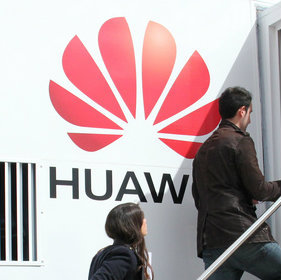Huawei's hardest year starts with profit down $160M but sales up
COVID-19 and US sanctions have led to a slowdown at the Chinese vendor, but its engine is still running.

Huawei has grown philosophical in its middle age, planting pearls of Chinese wisdom in its earnings statements. "A seed that survives the storm will sprout and then blossom," said the vendor as it reported first-quarter figures that reflected the turbulence all around.
A juggernaut that avoids a jack-knife will crawl up the hill, might have been a more appropriate if less Confucian aphorism. This time last year, under a US-led assault on its business, Huawei managed a 39% year-on-year surge in sales and a net profit margin of 8%. For the first three months of this diabolical year, sales growth slowed to just 1.4%, giving Huawei revenues of about 182.2 billion Chinese yuan ($25.8 billion), while its net profit fell RMB1.1 billion ($160 million), to RMB13.3 billion ($1.9 billion). But the huge motor is still running.
For all the difficulties the company faces, its short statement about results had a single, predictable theme: COVID-19. The pandemic has already prompted lockdowns and delays to 5G projects in Europe, a region that figures prominently in Huawei's results. Last year, Europe, the Middle East and Africa accounted for nearly one quarter of total sales, making it the biggest regional market after China. Stricken by COVID-19, it may have far less to contribute in 2020.
The good news for Huawei is that China, claiming to be over the worst of it, is racing ahead with its own 5G deployment. As the largest domestic supplier, Huawei is likely to be the main beneficiary. Already, it has secured about 58% of a China Mobile tender worth roughly $5.2 billion. With China targeting the rollout of about half a million 5G basestations by year end, China Telecom and China Unicom, the two other national operators, are expected to announce similar multi-billion-dollar contracts in due course.
What remains unclear is the performance of different parts of the business. Last year, Huawei's device-making consumer unit was largely responsible for sales growth of 19%, to nearly RMB859 billion ($121.5 billion). Yet its performance was much weaker in the second half of the year after it was blocked from using Google Mobile Services – the Internet giant's suite of Android-based applications and software – by Huawei's inclusion on a US trade blacklist. A slowdown at this division might largely explain the flatlining of sales in the first quarter.
On the network and enterprise sides, a COVID-19 backlash against China will undoubtedly hinder a company that was already viewed as a security threat, trade cheat and intellectual property thief by its Western opponents. Accused of covering up the full extent of the coronavirus crisis, China is out of favor with many Western officials. European countries that would not bow to US pressure to ban Huawei are now being advised by Magrethe Vestager, the European Union's competition commissioner, to buy stakes in distressed European firms suddenly vulnerable to Chinese takeover.
Want to know more about 5G? Check out our dedicated 5G content channel here on Light Reading.
Aware of the risks, Huawei is on a new charm offensive. Its latest statement is full of talk about its latest 5G and AI-powered medical applications that can support the fight against COVID-19. It has been offering masks, test kits and other protective equipment to countries including the US. But it is walking a precarious tightrope between appearing helpful and looking downright opportunistic. In its suggestions it is well placed to support network projects for struggling European service providers, critics will see evidence that China and Chinese companies are exploiting the crisis for geopolitical and commercial gains.
A margin squeeze at the firm hints at investment activity, as Huawei tries to mitigate supply chain disruption caused by COVID-19 and US sanctions. "While restrictions have posed significant challenges, our strategy of dual-sourcing key components from multiple suppliers has allowed us to continue supporting our customers worldwide," said Victor Zhang, Huawei's vice president.
Spending on research and development soared 30% last year, to RMB131.7 billion ($18.6 billion), dwarfing investment activity by Western rivals such as Cisco, Ericsson and Nokia. "Last month Mr Ren said we will increase investment in R&D to more than $20 billion this year," said Zhang in reference to comments made by Ren Zhengfei, Huawei's founder. "We are on track to meet that commitment."
Earlier this year, Eric Xu told analysts and reporters that 2020 would probably turn out to be the hardest year in Huawei's history. Signs of that are apparent in this set of results, but hard is a relative term. "While our growth rate has slowed, this is a resilient performance in the face of both the entity list and coronavirus," said Zhang. Munching on the leftovers at China's 5G feast, European rivals may struggle to look as tough.
Related posts:
— Iain Morris, International Editor, Light Reading
About the Author(s)
You May Also Like




_International_Software_Products.jpeg?width=300&auto=webp&quality=80&disable=upscale)







